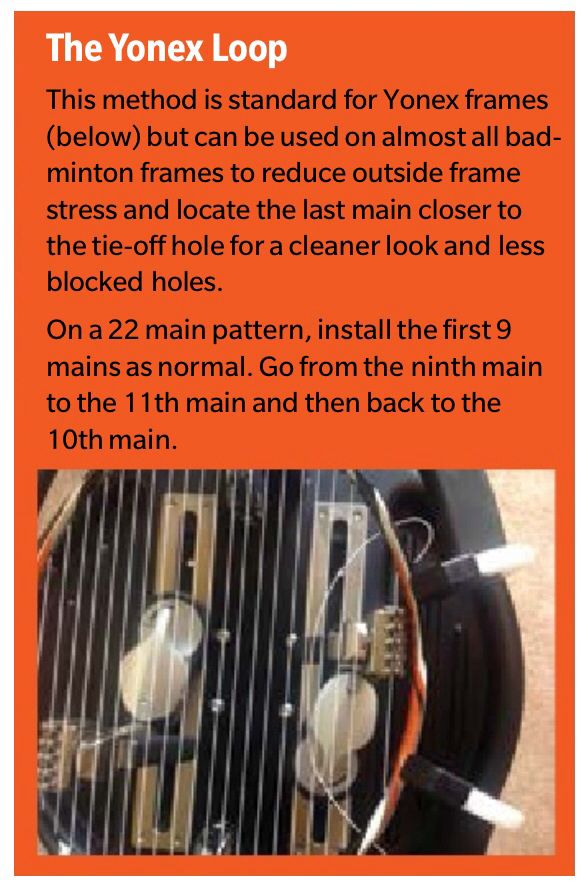JetFlyr
Rookie
I'd like to start a discussion about the so-called Yonex Loop, so I'll start by asking a few questions. This post only applies as it pertains to tennis racquets, not badminton racquets.
- Is it used on the tour by the main stringing teams?
- Is there a concern about the blocked holes it creates and how is this dealt with?
- I've only used it on the mains. Is it practical to use when finishing (or starting, for that matter) crosses?

